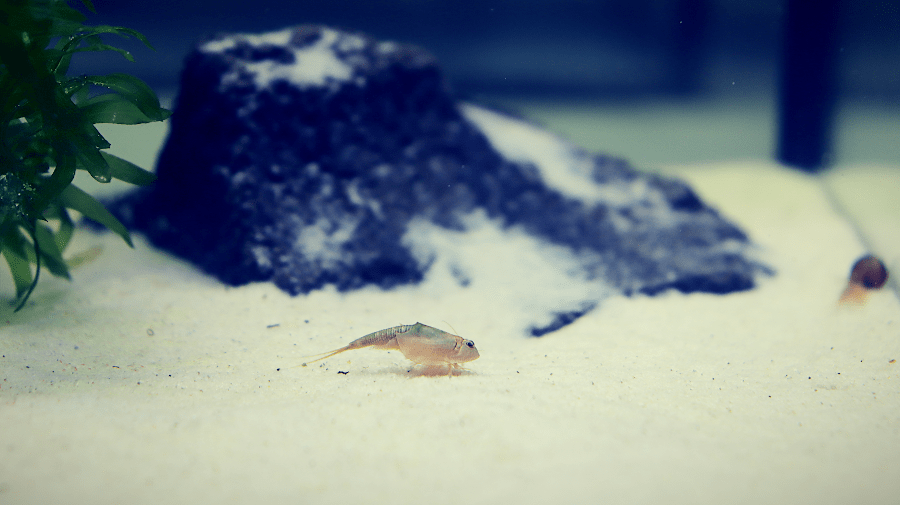Guide
What are Triops?
About 220 million years ago, dinosaurs inhabited our planet and dominated ecosystems. The era of the dinosaurs was ended by the mass extinction in the Cretaceous-Palaeogene boundary. Triops survived and are now the oldest known living animal species in the world. But what are Triops actually? Triops is the genus that belongs to the order of dorsal shellfish (Notostraca; “tortoiseshells” or also called “jawed crustaceans”) within the class of gill-foot crustaceans (Branchiopoda). The name Triops means “the three-eyed one” in Greek and is a living fossil.

What are Triops?: Way of life
This prehistoric crustacean already swam in pools where dinosaurs trudged more than 200 million years ago and is the dinosaur of the present day. With the genus Lepidurus, Triops belong to the Triopsidae. Within the dorsal shells, it is the only family. Triops cancriformis is considered the oldest known living species in the world. This was already recorded as a subspecies Triops cancriformis minor (†) in the 220 million year old Franconian Keuper. Triops has survived through the history of the earth, something no other animal has managed.
Puddles and water pools, which are formed by seasonal rain showers and floods, are the natural habitat of the crayfish. Triops live in temporary water bodies, mostly on clayey soil. Most occurrences are in the floodplains of rivers. Unfortunately, many occurrences are destroyed by building development, so that with only about 630 known occurrences in Germany and Austria, the number of habitats is alarmingly low. After heavy rainfall, the freshwater-dwelling primeval crabs usually hatch from their permanent eggs (cysts) between 24 and 72 hours. If ideal abiotic factors are present, hatching can take place after as little as ten hours. With the help of suitable technology such as LED lamps, an optimal environment can be created in the aquarium. Primeval crayfish spend most of their time swimming at the bottom of the water. There they forage for food or bury their eggs in the sand. As they are enthusiastic diggers, sufficient sand should always be distributed in the aquarium.
Cannibalism and nutrition
Approx. 48 hours after hatching, the animals are fed with powdered food for the first time. When the Triops reach a size of about one centimetre, they can be moved to a larger container. After 1.5 to 2 weeks, the Triops are given solid food, such as tropical granules, fish food or shrimp food. Cannibalism is quite normal with the primeval crabs. Breeders should not be alarmed when a large specimen starts to eat its conspecifics. Cannibalism can occur frequently, especially in the American species Triops longicaudatus. To counteract this, a protein-rich and balanced diet is advisable. The majority of Triops are females, while males are a rarity with a population of only ten percent. Triops have a life expectancy of between 30 and 90 days.
After two to three months, the animals die and leave new permanent eggs in the sand.
Reproduction
As soon as they have reached sexual maturity, primeval crabs start laying permanent eggs. These are basically encystised embryos in the gastrula stage. These permanent eggs can rest in the soil for many decades before a new flood triggers another hatching of the nauplii (larvae). The extremely resistant cysts can survive a long period outside the living water. In the species Triops cancriformis, a phase of 27 years of drought in the field has been proven. Both sexual and asexual reproduction occurs. Self-fertilisation (autogamy) takes place by means of a hermaphrodite gland. The nauplii hatch within 48 hours and grow into sexually mature animals in seven to fourteen days, during which they undergo numerous moults. The largest specimens reach a length of eleven centimetres, in Triops cancriformis the average length is between six and eight centimetres. The maximum lifespan in the field is about twelve weeks.
- Osmosis water in the aquarium: A guide for aquarium enthusiasts - 5. May 2024
- Vietnam: Hundreds of thousands of fish die due to drought and heat - 3. May 2024
- Introduction to the basics of ichthyology - 28. April 2024